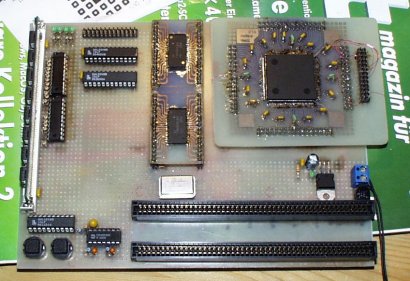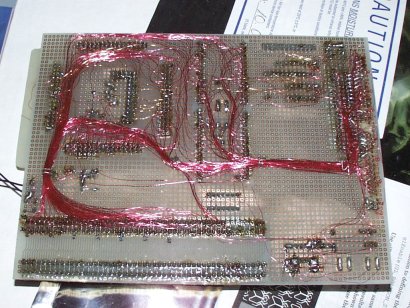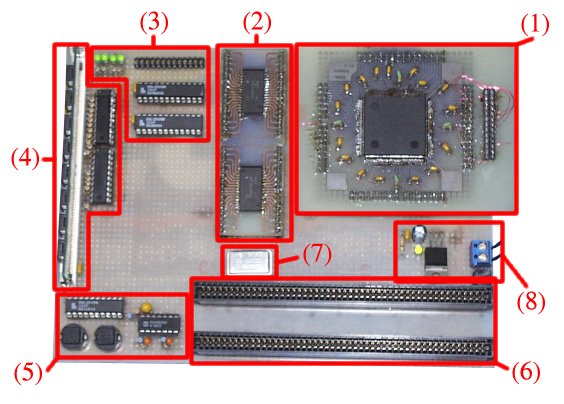
Well, as you can see, the ppQBox consists of three boards: the mainboard, the SRAM board and of the CPU board. If I get the chance to produce multi-layer boards, it will be of course only one board but I unfortunately have no chance to do so.... :(
 |
This is the top-view of the ppQBox mainboard. Isn't it a nice board?!? ;) Well, as you can see, the ppQBox consists of three boards: the mainboard, the SRAM board and of the CPU board. If I get the chance to produce multi-layer boards, it will be of course only one board but I unfortunately have no chance to do so.... :( |
 |
Hehehe... and this is the bottom-view of the board... crazy, isn't it? ;) Hmm... I used the incredible amount of 100 m vero wire... well, and I had much luck: I made no mistake and the board worked immediately!!! |

| This is the print version. Back to normal view |